Original text by Marina Belova
I've long wanted to write about Filmoplast yet couldn't get to it: either there was no Filmoplast or a suitable project. Finally, I figured out what I can do: I'd embroider a monogram on a handkerchief and show you how to use this sticky paper and what purposes does it serve. This article is aimed at those unfamiliar the subject. And yet...
Although I've learned how to use this paper a long time ago (or so it would seem), I was somewhat surprised when I visited the manufacturer's website in order to see the first-hand instructions. When you are not swamped with work and stop approaching everything from a professional standpoint, you are suddenly left with the time on your hands for experimenting and education. This makes me infinitely happy. When the work piles around, you rarely get a change to stick your head out and see what's outside. Though I may be the only one who thinks so.
But let's call Filmoplast to the stage.
Filmoplast is a paper covered with adhesive. You don't need an iron to glue it to the fabric, just hoop it with the checkered side up, tear away the protective skin (the one in checkers) that covers the adhesive and stick everything you like to it.
This is how the Filmoplast looks:
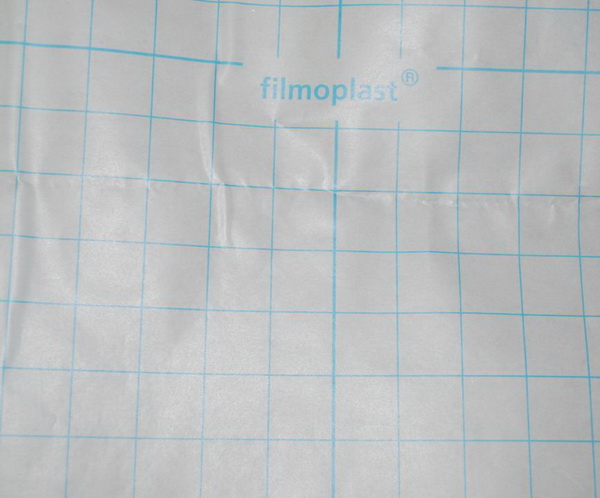
The checkers, as I take it, are necessary for precise hooping, and after you've removed the upper layer, the leftovers will help to align the item on Filmoplast.
This paper is meant to enable the embroidery machine users to embroider on delicate fabrics and other materials, for which hooping might not be a very good idea: velvet, leather, dense corduroy, paper, and so on. That is, the materials prone to the hoop burn or those impossible to hoop simply because of their volume, such as thick terry cloth (the frames on home embroidery machines are too thin and ineffective for this fabric). Additionally, Filmoplast was intended for highly stretchy fabrics that list elastane among their components. Another purpose of using
Filmoplast is to hold various small size items inside the hoop without any special devices. For instance, cuffs, collars, ribbons, etc. Gunold even suggested embroidering caps with the help of Filmoplast. I didn't try it and, therefore, can't offer any comment.
In my opinion, Filmoplast is nothing more than a costlier analog of the good old tear-away stabilizer + temporary spray adhesive combination. I myself prefer the stabilizer + adhesive combo simply because no matter how the German manufacturer praises Filmoplast as a stabilizer, it doesn't really stabilize anything, making it necessary to place something under the hoop so that to avoid embroidery defects.
Besides, I utterly dislike the way Filmoplast comes off the wrong side. It either sticks sure as death and then tears off in tiny bits with fibers in them (velvet pile, for example) or it doesn't hold to the fabric and peels off during the embroidery so that you have to reattach it, which causes various mishaps with the outer look of the embroidery. Hence, not every fabric can be embroidered on this paper.
So what did surprise me in the instructions on the German website? The way you can save on this rather costly material – it turned out that you only have to hoop a big piece of it once. They show it in great detail with pictures.
And I'll show you how I embroidered handkerchiefs on Filmoplast.
So I hoop a piece of Filmoplast:
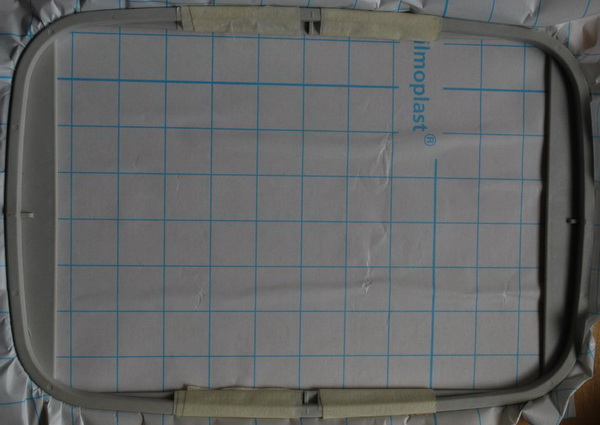
Make a cut in the protective skin:
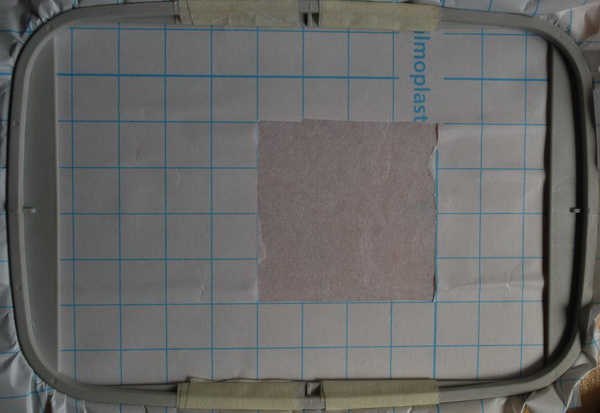
Attach my handkerchief to the adhesive, aligning it with the checkers that were left over after I cut out a hole:

Embroider the design:
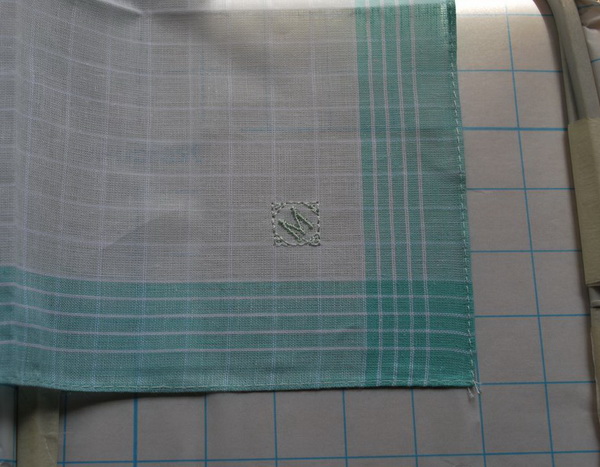
Carefully remove the handkerchief so that not to tear the Filmoplast:
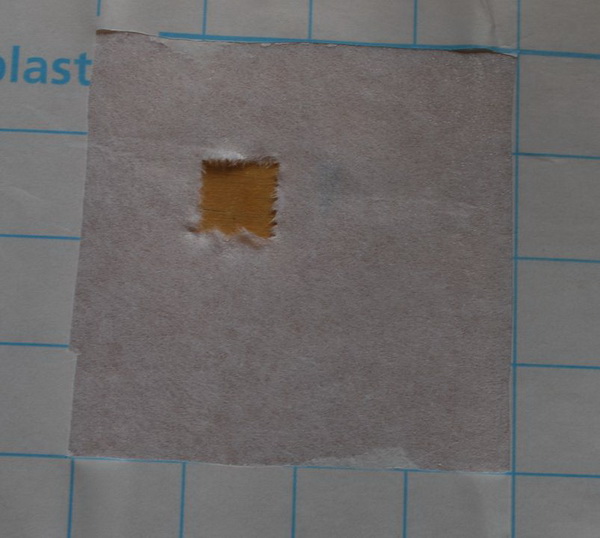
Cover the hole in the paper with a small piece of Filmoplast which I press to the exposed adhesive:
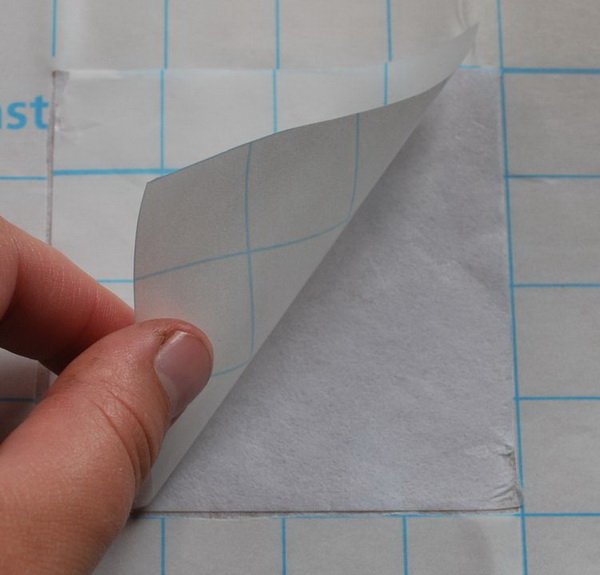
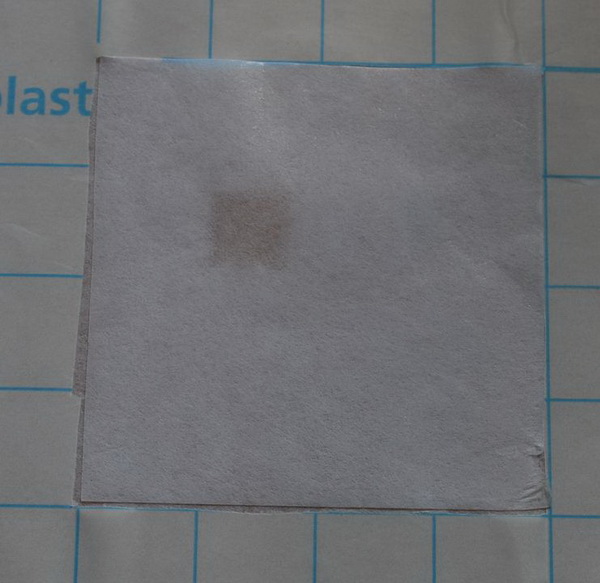
Attach a new handkerchief and resume the embroidery:
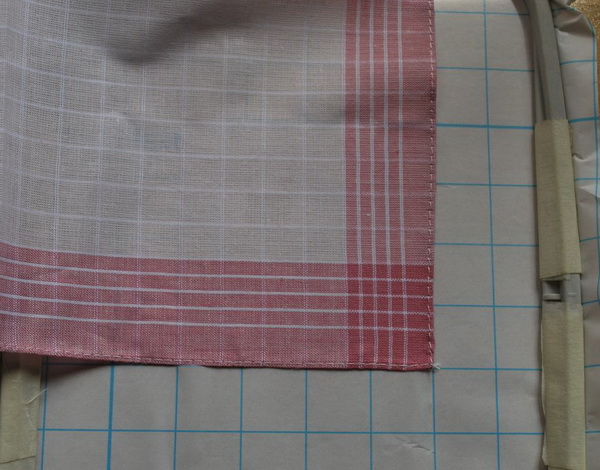
This process goes on and on, until you've completed all the handkerchiefs.
Here are the two of mine:
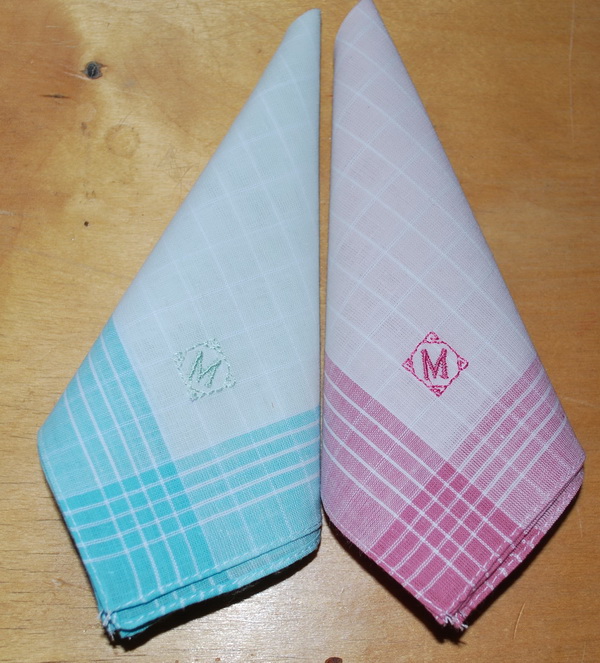
Simple as that. It's never too late to learn. The thought wouldn't probably even cross my mind – I've always hooped a new piece of Filmoplast for every item.
To think of it, I've already described a similar technique, which can be regarded as an alternative to using Filmoplast – hooping a double-sided adhesive tape. In this case, I could put it under the hoop instead of sticking another, small piece of Filmoplast.
Edited by Irina

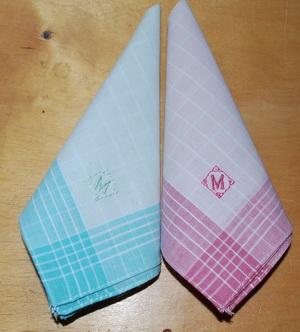

There are no reviews to display.